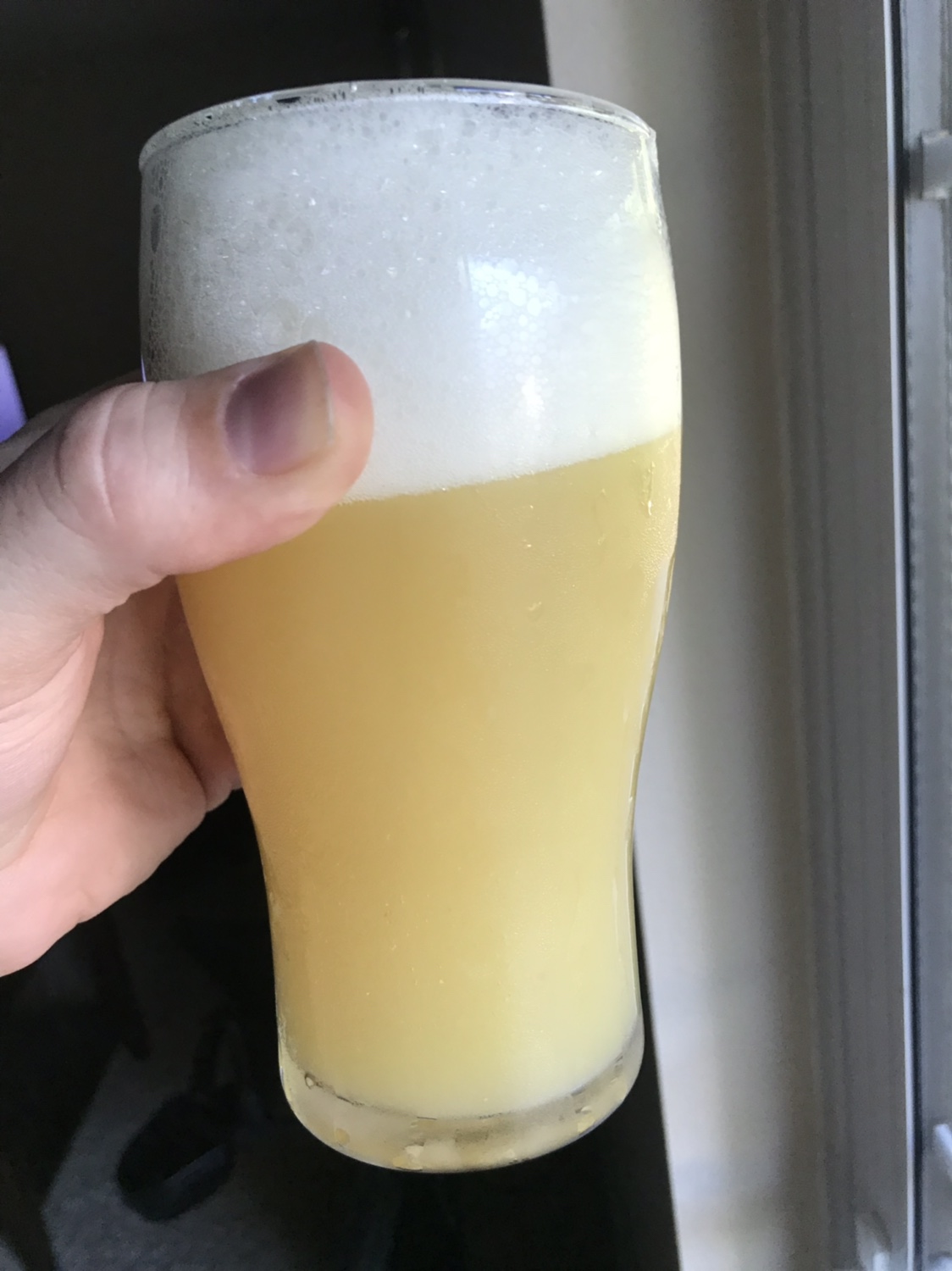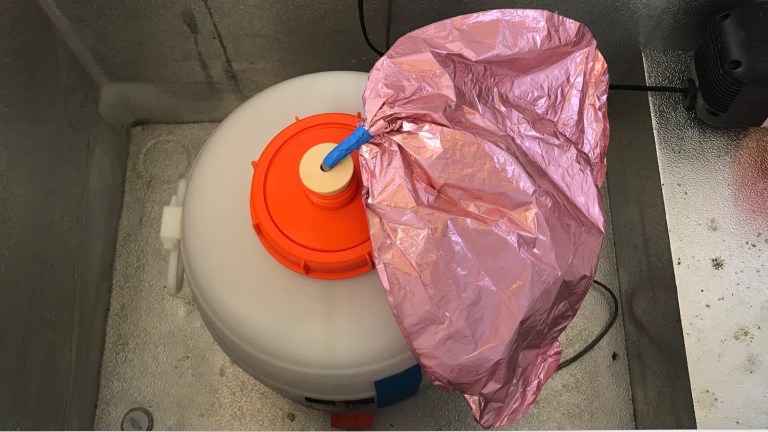beervoid
Hophead & Pellet Rubber
Hello everyone,
Allow me to share some thoughts and speculations for you to consider and hopefully add to my hypothesis.
I've been mainly brewing New England style IPA's this year and have been testing out all kinds of factors.
I've done both dry hopping during active fermentation and after but for now have settled on dry hopping mostly after fermentation is done as I didn't notice much difference.
As a brulosophy experiment seems to show there is indeed a "small" flavor difference in beers dry hopped during active fermentation.
I'm of the opinion this is probably due to that we loose some "fresh" hop flavors through whatever co2 is being blown away.
Now I have been extensively researching NEIPA's and I would argue there is probably ample evidence that pro and home brewers alike are still dry hopping during active fermentation.
So if it doesn't really make a difference flavor wise and is actually counter productive in trying to preserve as many hop oils as possible, what else is there?
I've noticed some people claim to dry hop at ridiculous high amounts. Up to 1lbs in 5 gallons.
I've also read that commercial breweries use in between 12 to 16oz for 5 gallons in their "Double Dry Hopped" beers.
Notice the term DOUBLE.. which might point to dry hopping during active fermentation?
Now i've pushed my NEIPA's to 12oz on 5 gallons and this beer was completely undrinkable. Very harsh flavors which where still there even 4 weeks after cold crashing.
I might attribute this to the particular batch of Galaxy pellet hops but it got me thinking...
Aside from the fact that pro brewers can use a centrifuge to filter their beers with precision we home brewers can't achieve...
What if dry hopping during active fermentation has something to do with it?
Scott Janish wrote an article about polyphenols and how wheats and oats can help drop them out.
I'm wondering that since most NEIPA's have some form of extra protein additives like wheat and oats in the recipe, could it be that with the ridiculous dry hopping rates (16oz in 5 gallons) this first dry hop amount during active fermentation actually drops out some or most unwanted particles, polyphenols and gives room for another later dry hop charge.
In other words does "biotransformation" not make the hops more juicy but is it just a way to get more hops into the beer without over extracting unwanted flavors?
I've settled myself for now on 8oz-10oz of dry hopping (mostly cryo hops) and
have yet to put this idea to the test and was hoping on some feedback and experiences of other.
EDIT. with 8-10oz dry hops I take into account cryo counts double so would put about 2-4oz pellets and 2-4oz cryo
Cheers!
Allow me to share some thoughts and speculations for you to consider and hopefully add to my hypothesis.
I've been mainly brewing New England style IPA's this year and have been testing out all kinds of factors.
I've done both dry hopping during active fermentation and after but for now have settled on dry hopping mostly after fermentation is done as I didn't notice much difference.
As a brulosophy experiment seems to show there is indeed a "small" flavor difference in beers dry hopped during active fermentation.
I'm of the opinion this is probably due to that we loose some "fresh" hop flavors through whatever co2 is being blown away.
Now I have been extensively researching NEIPA's and I would argue there is probably ample evidence that pro and home brewers alike are still dry hopping during active fermentation.
So if it doesn't really make a difference flavor wise and is actually counter productive in trying to preserve as many hop oils as possible, what else is there?
I've noticed some people claim to dry hop at ridiculous high amounts. Up to 1lbs in 5 gallons.
I've also read that commercial breweries use in between 12 to 16oz for 5 gallons in their "Double Dry Hopped" beers.
Notice the term DOUBLE.. which might point to dry hopping during active fermentation?
Now i've pushed my NEIPA's to 12oz on 5 gallons and this beer was completely undrinkable. Very harsh flavors which where still there even 4 weeks after cold crashing.
I might attribute this to the particular batch of Galaxy pellet hops but it got me thinking...
Aside from the fact that pro brewers can use a centrifuge to filter their beers with precision we home brewers can't achieve...
What if dry hopping during active fermentation has something to do with it?
Scott Janish wrote an article about polyphenols and how wheats and oats can help drop them out.
I'm wondering that since most NEIPA's have some form of extra protein additives like wheat and oats in the recipe, could it be that with the ridiculous dry hopping rates (16oz in 5 gallons) this first dry hop amount during active fermentation actually drops out some or most unwanted particles, polyphenols and gives room for another later dry hop charge.
In other words does "biotransformation" not make the hops more juicy but is it just a way to get more hops into the beer without over extracting unwanted flavors?
I've settled myself for now on 8oz-10oz of dry hopping (mostly cryo hops) and
have yet to put this idea to the test and was hoping on some feedback and experiences of other.
EDIT. with 8-10oz dry hops I take into account cryo counts double so would put about 2-4oz pellets and 2-4oz cryo
Cheers!
Last edited:




















































![Craft A Brew - Safale BE-256 Yeast - Fermentis - Belgian Ale Dry Yeast - For Belgian & Strong Ales - Ingredients for Home Brewing - Beer Making Supplies - [3 Pack]](https://m.media-amazon.com/images/I/51bcKEwQmWL._SL500_.jpg)







